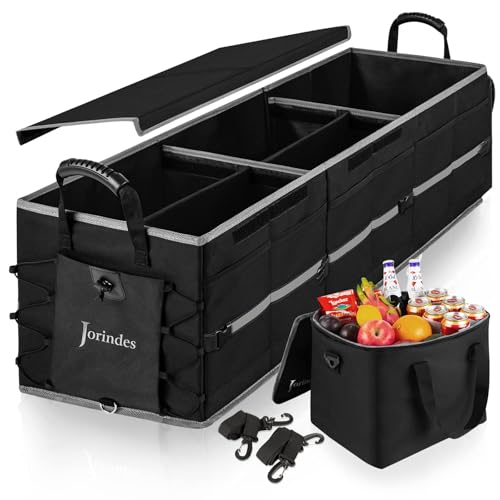




Transporting your weapon in your personal belongings on a flight is subject to strict regulations. Ensure that the item is unloaded, securely packed in a hard-sided container, and fully declared during check-in. This standard procedure is crucial for compliance with airline policies as well as federal laws.
Before traveling, review specific airline guidelines, as rules can differ significantly. Not all carriers permit transport of weapons, and those that do may have particular limitations regarding type and ammunition. Research beforehand to avoid unexpected complications at the airport.
Familiarize yourself with the regulations of both the departure and arrival states. Certain regions impose restrictions or outright bans on the possession or transport of such items. Verify local laws to ensure you’re not unintentionally violating any ordinances, which could lead to severe legal repercussions.
Always carry documentation that indicates legal ownership and compliance with applicable laws. This practice not only provides peace of mind but may also expedite the check-in process. Clear communication with airline staff regarding your intentions is advisable to avoid misunderstandings.
Can I Transport My Weapon in My Checked Baggage?
Yes, firearms can be transported in baggage that is checked. Adhere to the following guidelines to ensure compliance with transportation regulations.
Regulations and Packing
Ensure that the weapon is unloaded before packing. Utilize a hard-sided container specifically designed for firearm storage. This container should be locked securely, with only the passenger having the key or combination. Ammunition must be stored separately, ideally in its original packaging or in a suitable container.
Airline and State Policies
Each airline has its own set of rules regarding weapon transportation. Verify the individual regulations of the airline prior to arrival at the airport. Additionally, check state laws for your departure and arrival locations, as restrictions may vary significantly between regions.
Understanding TSA Regulations for Firearms
Transporting a weapon requires strict adherence to TSA guidelines. When placing your weapon in transport bags, ensure it is unloaded and securely locked within a hard-sided container. This container must only be accessed by you, including a lock that only you can open.
Documentation and Notification

Prior to arrival at the airport, confirm with your airline regarding specific requirements, as these may vary. Upon check-in, inform the airline personnel about the weapon in your container. Failure to do so could lead to legal implications or denial of travel.
State and Local Laws
Familiarize yourself with the regulations of both your departure and destination locations. Regulations regarding ownership and transportation differ significantly across jurisdictions, and compliance with these laws is crucial to ensure a smooth travel experience.
Packaging Requirements for Firearms in Checked Luggage
Ensure that all weapons are unloaded. Use a hard-sided container specifically designed for transport. This case must be locked securely to prevent unauthorized access. A solid container minimizes risk during handling.
Include a declaration of the contents where it is required by airline policies or local laws. Label the exterior of the container with contact information and pertinent details to aid identification.
Ammunition must be packed separately in the original packaging or in a container specifically designed for ammunition storage. Typically, these containers should hold a maximum of 11 pounds of ammunition.
Check with individual airlines for additional requirements, as they may have specific protocols regarding the transport of weapons and related accessories.
Always verify regulations at the departure and arrival locations, as local laws can significantly differ. Being informed of these rules ensures smooth transit and compliance with legal standards.
State-Specific Laws on Traveling with Firearms
Before traveling, familiarize yourself with local regulations regarding transport of weapons, as they vary significantly across states. Here’s a concise overview:
- California: Requires firearms to be transported in a locked container. Carrying a loaded weapon in a vehicle is prohibited.
- Texas: Allows concealed carry without a permit; however, local laws may impose restrictions in certain areas, so check municipalities for specific rules.
- Florida: Recognizes concealed carry permits from other states, but ensure you follow state laws while in transit.
- New York: Has strict regulations including mandatory permits for possession. Transit through the state should comply with their laws, even if you are just passing through.
- Illinois: Requires a Firearm Owner’s Identification (FOID) card for possession and has specific regulations on carrying in public spaces.
- Massachusetts: Has stringent laws; a valid license is essential, and firearms must be transported in a locked case.
Always confirm guidelines before departure, as legal repercussions for violations can be severe. Utilize resources such as state government websites or legal experts for the most accurate and current information.
Airport Procedures for Checking in Firearms
Prior to arrival at the airport, ensure proper documentation is prepared for the weapon. This may include permits and registration depending on state laws.
At the airport, locate the designated area for handling weapons, typically found near the check-in desks. Approach the airline representative and inform them of your intent to declare the item.
Follow these specific steps:
- Present your identification along with any required documentation.
- Place the item in a hard-sided case, locked and secured as per airline regulations.
- Inform the agent about the nature of the contents inside the case.
- Complete any additional forms required by the airline.
Remain patient during the inspection process, as additional security measures may be implemented. After clearance, proceed with check-in and ensure you monitor the bag tag for tracking purposes.
Upon arrival at your destination, retrieve your item at the designated area for specialized luggage. Confirm that the condition of the container remains intact upon retrieval.
Review airline policies regularly, as they can differ significantly, influencing the overall experience during air travel with such equipment.
Notifying Airlines About Firearm Transportation
Inform the airline prior to travel about your intent to transport a weapon. Most carriers require notification at least 24 hours before departure. This allows them to provide specific instructions and ensure compliance with their policies.
When contacting the airline, clarify the type of weapon being transported and discuss any associated fees or forms required for proper handling. Keep a record of your communication for reference during check-in.
Additionally, inquire about unique regulations at your destination, as some airlines have differing protocols based on local laws. This can directly affect the acceptance and handling of your items upon arrival.
For reference, if you’re also looking for specific baby gear, check out the best umbrella stroller with inline wheels.
Consequences of Improperly Packing Firearms
Failure to adhere to packing guidelines can lead to severe repercussions. Legal issues, delays in travel plans, and potential safety hazards are among the primary concerns. Improper packing might result in confiscation by authorities or even fines, depending on the severity of the violation.
Legal Repercussions
Regulatory bodies enforce strict measures against noncompliance. Violating transportation regulations may result in criminal charges, which can carry significant penalties. It is essential to familiarize yourself with both federal and state laws to prevent legal challenges.
Operational Issues During Travel
Travelers may experience significant delays at security checkpoints if weapons are not packed correctly. This can lead to missed flights and added stress. Additionally, airlines may have specific policies that could complicate the process, extending wait times.
| Consequence | Description |
|---|---|
| Legal Action | Charges may be filed for noncompliance, leading to fines or criminal records. |
| Confiscation | Authorities may take possession of improperly packed items, impacting future travel. |
| Delays | Incorrect packing can result in prolonged security checks, causing travel disruptions. |
| Safety Hazards | Mishandling could pose risks to oneself and others, emphasizing the importance of careful packing. |
To avoid complications, it’s advisable to check the guidelines thoroughly prior to your trip. Resources like best aquarium backgrounds can provide additional insights into other essential travel arrangements.







